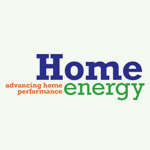A survey of local home building associations and recent updates reveal that more than 100,000 homes have been built and certified by voluntary, builder-supported green building programs around the country since the mid-1990s, according to the National Association of Home Builders.
We do not strictly control Google ad content. If you believe any Google ad is inappropriate, please email us directly here.
That’s more than a 50 percent increase from the last survey of green homes: In 2004, the National Association of Home Builders Research Center counted 61,000 green homes in the United States.
“This ... number is yet another indication that market-driven programs, not mandates, are the best way to encourage the growth of green building,” said former NAHB President Brian Catalde, a Southern California home builder. “The home building industry is leading efforts to make homes more energy- and resource-efficient.”
NAHB has been encouraging these efforts over the years by providing builder education, and in 2004 published Model Green Home Building Guidelines to help its local associations establish their own climate-specific, market-appropriate programs. In 2007, NAHB announced that, to further promote industry advances, it would create an American National Standards Institute-accredited residential green building standard, slated to be completed in 2008.
The success of voluntary green building programs around the country speaks to the industry’s commitment to reducing the operating costs of homes, conserving water and energy, improving resource-efficiency and minimizing construction waste. NAHB has collaborated with the International Codes Council to develop the green building standard, which brings uniformity to sustainable building. The standard will serve as a baseline for green building programs without abandoning the proven principle that voluntary, region-specific, flexible programs can be truly green and also allow for innovation.
“The success of these regional programs is something that’s very important to keep in mind,” Catalde said. “The new standard won’t replace these programs, but it will provide builders all over the country with common ground – a green baseline that everyone can agree on.”
Among the success stories:
- Built Green Colorado, a program of the Home Builders Association of Metro Denver, has certified 33,000 homes since its inception in 1995. Its Built Green University program educates hundreds of area builders and other industry members around the country.
- Built Green Washington’s network of 10 regional programs run by local home builder associations has certified 15,000 homes. Its members have won a number of National Green Building Awards.
- The Southern Nevada Home Builders Association Green Building Partnership has been recognized as the official – and voluntary – green building program for the city of Las Vegas. The Nevada program is based on the Model Guidelines, adjusted to reflect the desert climate and water scarcity.
“The Southern Nevada HBA’s program is a great example of the beauty of these Guidelines,” Catalde noted. “There is no one-size-fits-all solution to green home building. Programs must be flexible, dynamic and market-based – that’s the way that green building constantly improves.”
Catalde also recognized the leadership of the Green Building Initiative (GBI), the Portland, OR-based non-profit organization which has worked in partnership with many local home building associations as they launched Guidelines-based green building programs, providing administrative and marketing support. Since 2004, this effort has produced 15 state and local green building programs based on the Model Guidelines, and certified more than 100 homes in cities such as St. Louis, Philadelphia, and Durham, NC.
“We’re proud of our partnership with the NAHB and their local associations, as well as the work we’ve done together to help accelerate the adoption of sustainable construction across the nation,” said GBI President Ward Hubbell. “We’ve witnessed first-hand the value of market-driven solutions to sustainability and commend the NAHB for their leadership in this arena.”
Other special projects built to the Guidelines include The New American Home in Orlando, FL (the 2007 demonstration home built in conjunction with the International Builders’ Show); a student-built home by a Lancaster County, PA, technical school program; and the Mainstream Green Home in Raleigh, NC.
“We know that green building has left the niche-market category: [100,000] certified homes in just over a decade is incredible,” Catalde said. “This also demonstrates how market acceptance, rather than mandates, really benefits both the consumer and the industry.”
The consensus committee that developed the new national standard is led by NAHB and the International Code Council. The ANSI-accredited NAHB Research Center is secretariat for the standard. For more information, visit www.nahbrc.org.
HHI Error Correction Policy
HHI is committed to accuracy of content and correcting information that is incomplete or inaccurate. With our broad scope of coverage of healthful indoor environments, and desire to rapidly publish info to benefit the community, mistakes are inevitable. HHI has established an error correction policy to welcome corrections or enhancements to our information. Please help us improve the quality of our content by contacting allen@healthyhouseinstitute.com with corrections or suggestions for improvement. Each contact will receive a respectful reply.
The Healthy House Institute (HHI), a for-profit educational LLC, provides the information on HealthyHouseInstitute.com as a free service to the public. The intent is to disseminate accurate, verified and science-based information on creating healthy home environments.
While an effort is made to ensure the quality of the content and credibility of sources listed on this site, HHI provides no warranty - expressed or implied - and assumes no legal liability for the accuracy, completeness, or usefulness of any information, product or process disclosed on or in conjunction with the site. The views and opinions of the authors or originators expressed herein do not necessarily state or reflect those of HHI: its principals, executives, Board members, advisors or affiliates.








